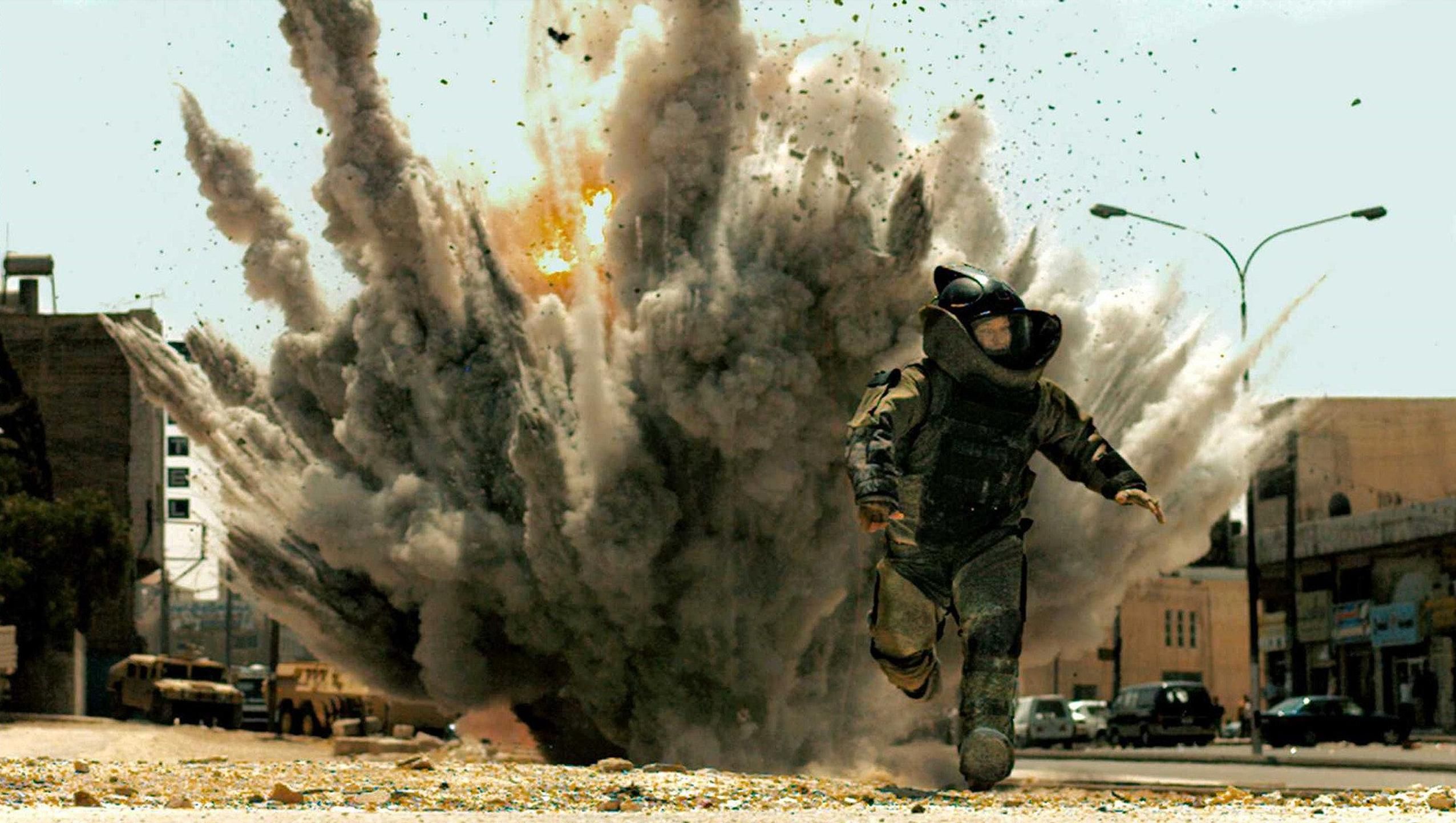Hollywood is not a classroom. Countless films are made every year that skew historical events so that they do better at the box office. There's a long list of war movies that get it wrong. So why these seem to attract the most negative publicity?
In War, People Die And Heroes Are Made
Stories of war fascinate audiences long after those wars are over. The fact that there were real people involved in the stories understandably upsets audiences who had a personal connection with them. When a family member who was actually a hero is suddenly depicted as a war criminal, artistic license has been taken too far.
Moreover, a study conducted by Notre Dame researchers Todd Adkins and Jeremiah J. Castle indicated that movies are more effective in shaping political opinion than cable news or political ads. And the images created by the filmmakers are the ones that go on to be embedded in people's minds as actual history.
The U.S. Military Had A Hollywood Unit
During the Second World War, the U.S. War Office created a Hollywood unit. Up until that time, movies were generally made to entertain, but the military wanted to ensure that Americans would support the war effort. Scripts that depicted the U.S favorably were selected over those that didn’t.
Whether the facts were true, didn't matter. Enter the heroes, good-looking All-American men with beautiful women waiting for them while they protected freedom.
The move set a precedent that continued throughout World War 2 and the Cold War, and until today continues to shape how stories about the military are told.
Initially, it was academics who objected to how stories about wars were depicted, but today more fans are voicing their disapproval when true stories are adapted to increase a film’s box office potential.
And they do make money. The highest-grossing war movie made was American Sniper, which took in 547.4 million USD.
Pearl Harbor Had Many Inaccuracies
Pearl Harbor (2001) has gone down in the record books as one of the most inaccurate portrayals of a historical event in the history of filmmaking. The movie focused on a defining moment in WW2; the surprise military strike by the Japanese on the naval base in Honolulu.
The cast included Ben Affleck, Josh Hartnett, Kate Beckinsale, and Cuba Gooding Jr., and the film made more than $449 million.
Although audiences found the action thrilling, many viewers were shocked by the factual and historical errors in the film. The budget for the movie was more than the entire cost of the damage in the attack, but there was obviously no expert advisor on set.
There’s a long list of mistakes: The use of planes that didn’t exist at the time, radio technology that only appeared in the 1950s, and the inclusion of nuclear submarines before the event of nuclear power.
However, there are bigger issues that concern fans: racism and sexism. The film shows Japanese planes purposefully bombing hospitals, which never happened.
The Pearl Harbor base had a staff of female code breakers, mechanics, and test pilots, but the only women depicted in the film are nurses. And heavily made up nurses, at that, which again is historically inaccurate. The rule books didn't allow it.
Many viewers felt the whole battle, which marked America’s entry into the war, was just used as a backdrop for a cheesy love triangle, which dishonors the memory of the 2403 brave men and women who lost their lives in the real attack.
The film even preceded Josh Hartnett's decision to quit Hollywood, but who's to say whether that piece of acting is what did it for him.
A War About A Russian Submarine In The Cold War Got The Producers Sued
The producers of the 2000 film, K19: The Widowmaker, ended up in hot water.
The Hollywood film focused on one of Russia's worst nuclear submarine disasters. The maiden voyage of K19 was hit by a reactor malfunction. To prevent an explosion in the North Sea, which could potentially have triggered a nuclear war, the crew braved intense radiation to cool the reactor. Eight men died.
The surviving crew accused producers of stealing their story, and depicting them as incompetent drunken stereotypes. The film, which starred Harrison Ford and Liam Neeson, was condemned in Russia for twisting the truth of one of the most heroic episodes in Soviet naval history.
The film's director, Kathryn Bigelow, became the first female director to win an Oscar for her 2008 film, The Hurt Locker. Veterans also knocked this production for its many inaccuracies.
The Navajo Code Talkers Were Just Supports For Nicolas Cage
During the Second World War, 29 Navajo men were recruited by the U.S. Marines to use their native language as military radio code. The code they created was never broken by the Japanese, who had managed to decipher all previous radio codes.
It’s a fascinating story.
In 2002 director John Woo released Windtalkers. Sadly, what was a heroic effort wasn’t really centered on the Native American characters at all, who just became supports for a fictional character played by Nicolas Cage.
The movie also created a fabricated storyline, that each Navajo code talker was supposedly accompanied by a Marine bodyguard who had to protect the code at all costs. This included killing the Navajo if any were about to be captured.
The film could definitely be added to the list of downright terrible movies Nicolas Cage has starred in.
There are many war movies that do get it right. But there are more that don't, including Saving Private Ryan, which included totally made-up scenes.
And with Hollywood being all about making money rather than depicting the real facts, it's likely not going to stop anytime soon. Even if celebs are sending funds to war-torn areas of the world, filmmakers will later take creative license with tragic events.

